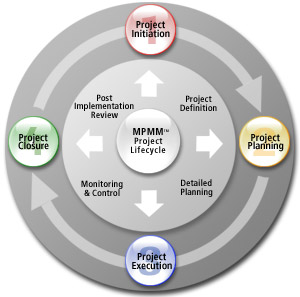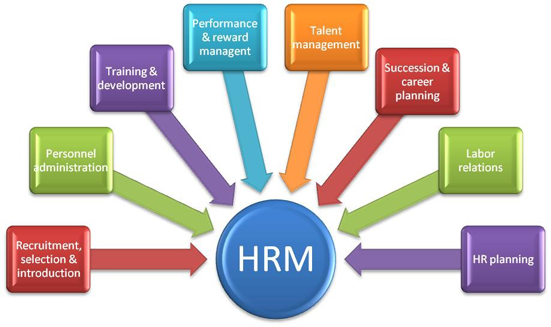Planning IT Project Management- Professional Practices in IT

Planning IT Project Management – Professional Practices in IT
The perfect combination of planning, supervising, and controlling can help in timely completion of a project, within agreed budget, and with best quality output. This article will throw a light on some of the best professional practices to be inculcated in your work to see a drastic improvement in the productivity and efficiency of the project. The sure shot way that your project objectives are met is by using effective project management methods and techniques. Below is the list which tells you the fundamental phases of managing your project and the necessary steps to implement for each the phase.
PLANNING PHASE
1: Prepare a project definition and plan your work accordingly
One of the common mistakes that are observed in IT projects in Australian organizations is that they try to amend the planning phase by emphasizing on straight away jumping into the project without thoughtful planning. It is very important to spend quality time on deciding the actual requirements, analyzing the goals, resources and execution of the project. This will help in cutting down the cost, project duration and give you quality output throughout the lifespan of the project. A project definition is a document that encompasses all phases of the project from its planning to its maintenance. Once the customer and related stakeholders agrees on this document, it is treated as the reference point for the entire task to be carried out as suggested by project management experts of ExpertAssignmentHelp.
PROJECT WORK PLAN CREATION
2: Formulate a workable plan of your project
Once the project definition is prepared and agreed by the respective parties, you can start off with the project work plan. The work plan gives you instructions for developing the deliverables of the project at different stages, testing it against varying parameters and properly managing it. If there is any existing work plan for the project available, you can have a look at it or you can prepare a detailed one with the help of fragmenting your work in a structured way and using network diagram. This work plan will take into consideration all the allocated resources, estimation of work and description of goals to the extent you find it achievable. The work plan will continue to be amended with the progress of the project.
PROCEDURE TO MANAGE YOUR PROJECT
3: Describe project management procedures at the starting of the project
The project management methods highlight the resources to be needed to manage the project effectively. It will also consider the manner in which these resources are utilized by the team, modification in project scope, accessing probable risk, level of quality, communication, compliance to prominent Industry standards etc. It is beneficial to manage the project religiously, rigorously and with a proactive thinking. It will be icing on the cake if the team, customers and stakeholders share same level of understanding on the way the project has to be managed.
4: Managing workplan and supervising its schedule and finances
Done with the above two steps successfully, we can now move to the execution phase. In this phase you need to review the project work plan on a daily basis to keep a track of your progress in respect timeline and budget. Identify those activities that have already been accomplished and mark them completed in the work plan. Figure out if there are other activities that need to be performed apart from those already mentioned. If so, then update the work plan by adding these activities. Once done, you must check whether the project activities will get completed within specified time frame and budget, if not, then an urgent measures should be adopted to speed up the pace of the project in order to keep it on the right track.
5: Be alert about tentative risks and take proactive measures
Look for all possible indications that might become trouble for your project in later stages. Some of these indications according to various project management assignment samples can be:
- Small or considerable gap in estimated time or finances that tends to get bigger with time
- Those tasks that you were expecting to get accomplished till now are still not over.
- A major drop in the enthusiasm and motivation of team members
- Productivity and the quality of output starts diminishing
- Steps for controlling and maintaining quality, testing and other key activities have taken secondary position.
RISK MANAGEMENT
6: Analyze the severity of risks and take proactive action
With the progress of the project, the team should identify the probable risks of the above mentioned types. For each possible risk, one should identify its overall impact on the project and take necessary preventive actions. High risk events should be dealt with specific and strict measures to eliminate them completely so that it doesn’t happen again. Medium risk events should be analyzed to check whether proactive actions can help to mitigate them. Low risk events should be treated only as assumptions, whose chances of a positive outcome are comparatively more. One should resolve all the issues and risks that crop up in the system on a priority basis.
Following above guidelines would help in efficient execution the project within the deadline, budget and will produce high quality output.
Other articles under blog series of “Professional Practices in IT”
- Managing team work and the challenge of leadership
- Managing Human Resources in IT, and Change Management
- IT systems Audit and QA
- Written and Oral communications in IT
- Professional Practice in IT Project Management
- Managing Software Testing
- Managing, protecting and systems integration
- Ethics, ethical behavior and professional responsibility
- Tools and techniques for decision making
- Investigative Research Methods
Do not miss to check similar blog series in other topics
[mc4wp_form]
Related Blogs






